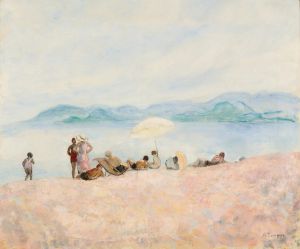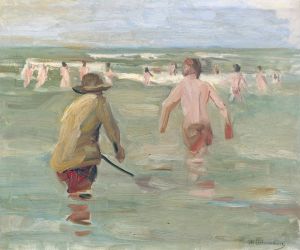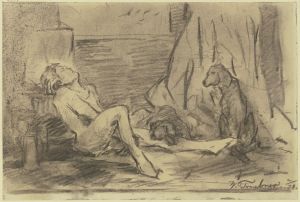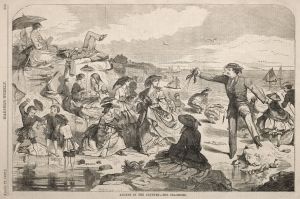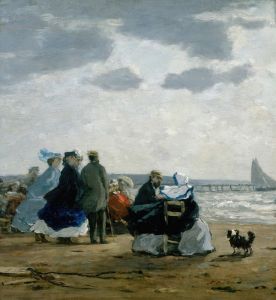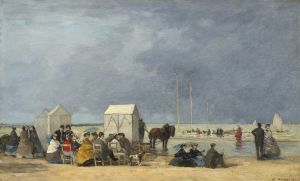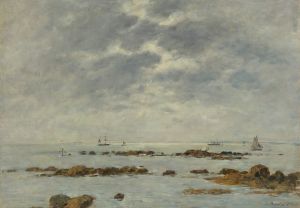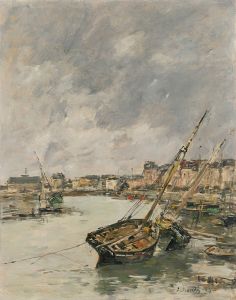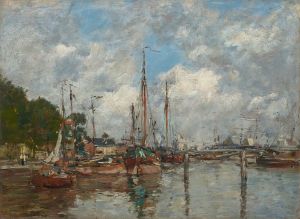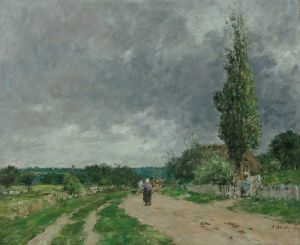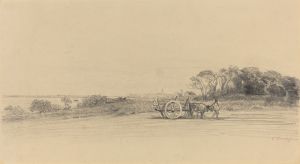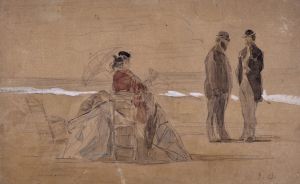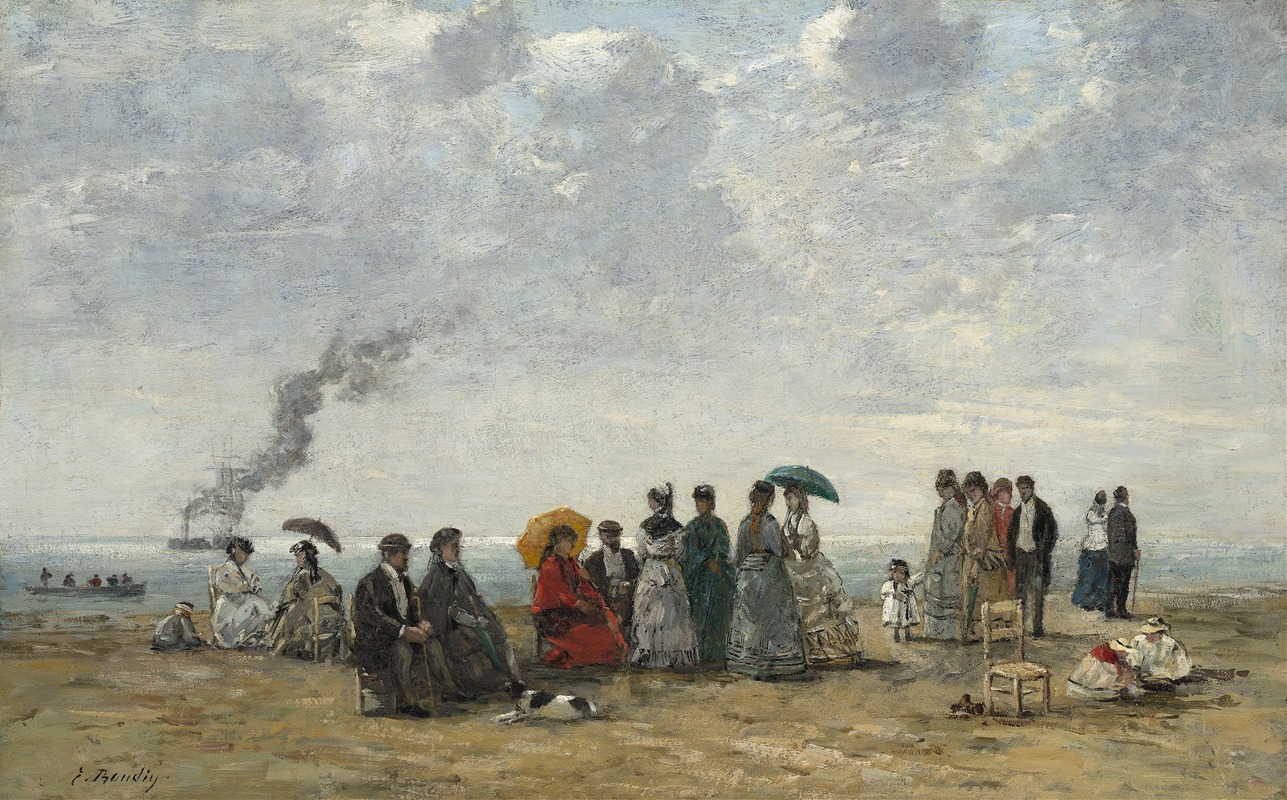
Figures on the Beach
A hand-painted replica of Eugène Boudin’s masterpiece Figures on the Beach, meticulously crafted by professional artists to capture the true essence of the original. Each piece is created with museum-quality canvas and rare mineral pigments, carefully painted by experienced artists with delicate brushstrokes and rich, layered colors to perfectly recreate the texture of the original artwork. Unlike machine-printed reproductions, this hand-painted version brings the painting to life, infused with the artist’s emotions and skill in every stroke. Whether for personal collection or home decoration, it instantly elevates the artistic atmosphere of any space.
Eugène Boudin was a French painter born on July 12, 1824, in Honfleur, France, and he is often regarded as one of the forerunners of the Impressionist movement. Boudin is best known for his seascapes and beach scenes, capturing the essence of the coastal environment with a keen eye for light and atmosphere. His works often depict the leisurely activities of the bourgeoisie, and he is celebrated for his ability to portray the transient effects of light and weather.
"Figures on the Beach" is one of Boudin's many paintings that exemplify his fascination with the seaside and the people who frequented it. Although specific details about this particular painting are scarce, it is consistent with Boudin's thematic focus on the interaction between humans and nature. His beach scenes typically feature elegantly dressed figures, often women in fashionable attire, enjoying the seaside air and views. These compositions are characterized by their loose brushwork and a palette that captures the changing light of the coastal environment.
Boudin's approach to painting was innovative for his time. He often painted en plein air, or outdoors, which allowed him to observe and capture the natural light and its effects on the landscape and figures. This method was influential on the Impressionists, including Claude Monet, who once referred to Boudin as his "master." Boudin's dedication to painting outdoors and his focus on the effects of light were crucial in the development of Impressionism.
The artist's choice of subject matter reflects the social changes of the 19th century, particularly the rise of leisure activities among the middle and upper classes. The beach became a popular destination for relaxation and recreation, and Boudin's paintings provide a glimpse into this aspect of contemporary life. His works often depict a harmonious relationship between people and their environment, with figures integrated into the landscape in a way that emphasizes the beauty and tranquility of the scene.
Boudin's technique involved a delicate balance between detail and suggestion. While his figures are often rendered with a certain level of detail, they are also integrated into the broader composition through the use of light and color. This approach allows the viewer to focus on the overall atmosphere of the scene rather than getting lost in minutiae.
Throughout his career, Boudin remained committed to his vision of capturing the ephemeral qualities of the natural world. His beach scenes, including "Figures on the Beach," are celebrated for their ability to convey the fleeting moments of everyday life with a sense of immediacy and authenticity. Boudin's work laid the groundwork for future generations of artists who sought to capture the world around them in new and innovative ways.
Eugène Boudin passed away on August 8, 1898, in Deauville, France, but his legacy lives on through his contributions to the Impressionist movement and his enduring depictions of the seaside. His paintings continue to be appreciated for their beauty, technical skill, and insight into the social and cultural dynamics of his time.





